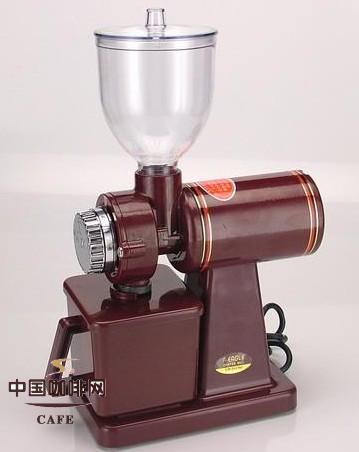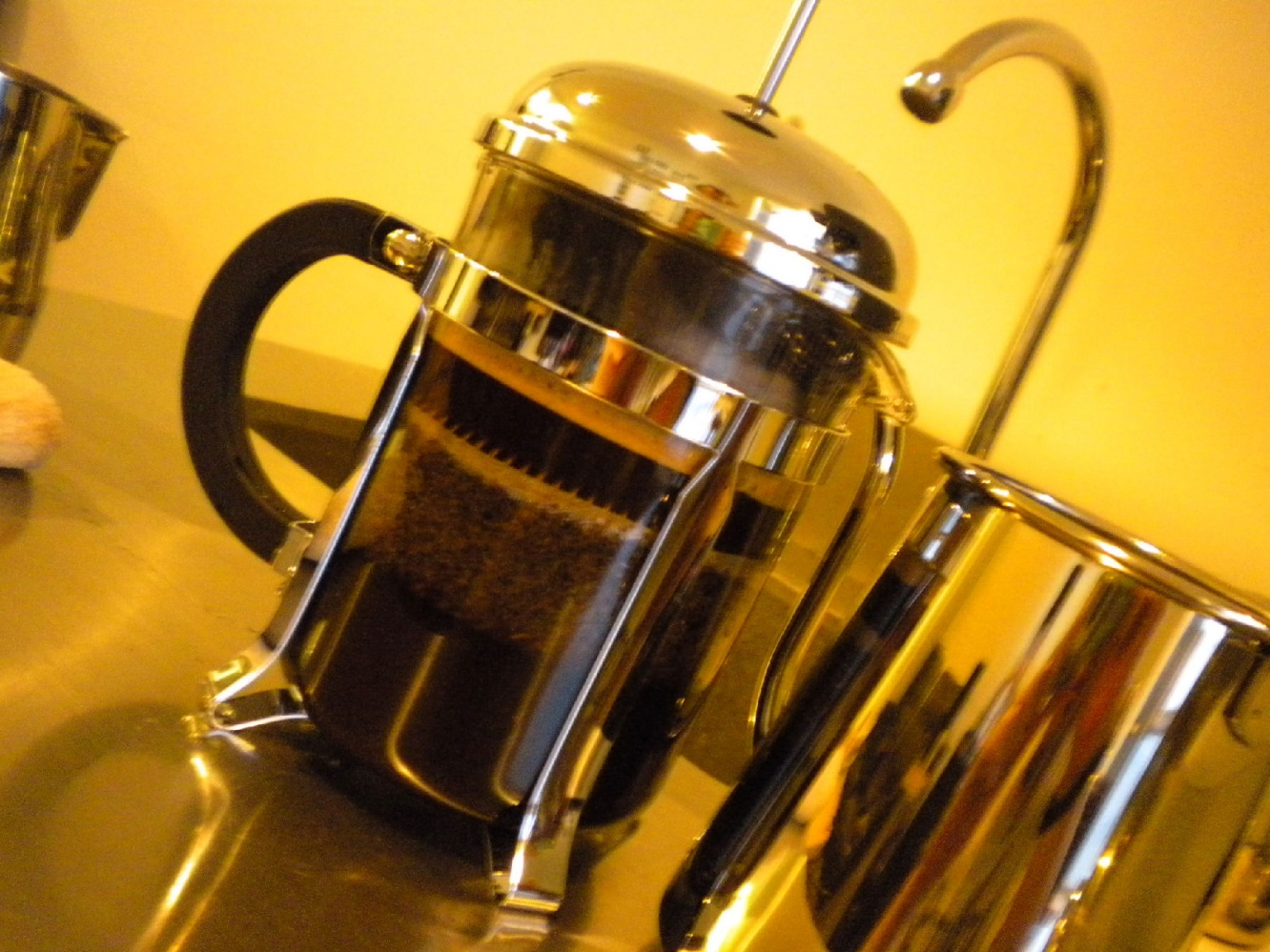Coffee brewing operation: an introduction to the historical cause, operation principle and technical points of the Philharmonic pressure.
Use "Philharmonic pressure" to make coffee cake residue after making coffee:
"AeroPress" is a new coffee-making appliance launched by AEROBIE in 2006. Its inventor, Alan Adler, is a lecturer in mechanical engineering at Stanford University in the United States. It has more than 40 patents in the United States and other countries. "Philharmonic pressure" is easy to use, put coffee particles in the pressure bucket, soak in water for 10 seconds, gently and slowly press the pressure bar in 20 seconds, a total of only 30 seconds, a cup of delicate, rich, supple, delicious coffee will be made.
"Philharmonic pressure" outer packaging:
Unlike the drip filter coffee machine, although the soaking time is very short, it can fully soak the coffee particles and exert soothing and gentle pressure during extraction. It draws lessons from the pressure bar principle of the French press, but the coffee liquid is pressed out from the bottom of the apparatus through the filter paper, and the coffee particles are finer than those required by the French press, and the contact time between coffee and water is shorter but the pressure is higher, thus ensuring that the coffee drink is almost free of coffee powder. It uses the extraction method of an Italian espresso machine, but a layer of filter paper is added to the powder bowl, resulting in lower water temperature and lower pressure, resulting in a simpler structure and a much lower cost. but the extracted coffee tastes richer and softer without bitterness. Kenny Kenneth Davids, a famous American coffee reviewer and author of several coffee monographs, commented on "Philharmonic pressure": "if used correctly, Philharmonic pressure can make espresso and American coffee with a pure sense of export, but its price is only 20 or 1/30 of that of many household coffee machines." Eight reviewers from LOCALS ONLY COFFEE, a company in Washington State, where the coffee industry is well developed in the United States, gave the highest "five-star" rating after trial.
The state of "Philharmonic pressure" when extracting coffee:
All the components of "Philharmonic pressure" are as follows:
"Philharmonic pressure" has held three international competitions abroad. The following picture is a foreign version of "Philharmonic pressure" in different colors.
Photo Source: shotzombies
In use, we will find:
The soaking time required by "Philharmonic pressure" is only 10 seconds, but it can be fully soaked, thus ensuring that the coffee can be extracted quickly and have a stronger flavor.
"Philharmonic pressure" requires a lower water temperature of-80 degrees, so that it can extract a more supple taste.
The extraction time of "Philharmonic pressure" is only 20 seconds, which is much shorter than that of other utensils (such as the French kettle and the drip filter coffee machine are all at least more than three minutes). Therefore, the coffee extracted does not taste bitter.
The press speed of "Philharmonic pressure" is only about 10 centimeters in 20 seconds, and the movement is gentle, so it can extract the richer taste of coffee.
Due to the low water temperature and short extraction time, the acidity of coffee extracted with "Philharmonic pressure" is 1/5 of that of dripping coffee, which is more comfortable for many coffee drinkers.
Instructions for use:
1. Remove the pressure bar and powder bowl from the filter cartridge:
2. Put a piece of filter paper at the bottom of the powder bowl, and then buckle the powder bowl into the filter cartridge (350 pieces of filter paper attached with the appliance):
3. Place the filter cartridge on the coffee cup (make sure the cup is a little bigger and heavier to prevent tipping):
4. Put in two tablespoons of coffee powder particles:
5. Slowly pour in about 80 degrees hot water, the amount of water to the scale 2:
6. Stir with a stirring rod for about 10 seconds:
7. Soak the rubber ring of the pressure rod into the filter cartridge, press down half a centimeter (0.6 cm), and then maintain the pressure so that the pressure rod can reach the coffee particles at the bottom in 20 to 30 seconds. Note: pressure is the key to extracting satisfactory coffee:
8. A cup of double espresso is finished. Add hot water and it becomes American coffee; add hot milk and it is latte coffee. How's it going? Easy!
9. Clean up: remove the powder bowl, push the pressure bar, and eject the coffee "pressed powder":
10. Rinse the rubber ring on the head of the pressure bar with water and wipe off coffee powder and water stains.
Use tips:
Hot water of about 80 degrees is recommended. Calculate the time it takes to boil a pot of water, and the temperature of boiling it in 3 or 4 hours is about 80 degrees; the temperature of hot water in a household thermos is about 80 degrees.
The thickness of coffee particles. Fine grinding, coffee particles for drip filter coffee machine and espresso machine can be used; if a blade grinder is used, the time required to grind two tablespoons of coffee powder is between 20 and 30 seconds; if it is found that the pressure bar is difficult to press down and the resistance is too high, it proves that the coffee grinding is too fine.
Pay attention to using a stronger coffee cup and hold it steady, so as to prevent the pressure from being too high when the push rod is too fast, which leads to coffee cup tipping or fragmentation.
Pick up the coffee and smell it, you will immediately realize that it may be a good cup of coffee; after drinking it, you will find that the taste is very unique, delicate, supple, sweet, mellow, balanced, without the slightest bitterness, especially without any coffee powder in the coffee liquid, the taste is very pure.
To tell you the truth, when I first got the Philharmonic pressure, I didn't love it; I didn't take it seriously when I saw a lot of praise on foreign websites, but I had to be impressed by it after the trial. Kevin Knox, author of Coffee Basics and 28 years of experience in boutique coffee, said: "I have all kinds of coffee making utensils, but since the Philharmonic pressure came in, all the other coffee utensils have started to accumulate dust." Colin Nwell, editor of the coffeecrew.com website, called Philharmonic pressure "the most important coffee invention of the 21 century."
You will like the coffee made with "Philharmonic pressure", and you will probably like "Philharmonic pressure".
"Philharmonic pressure", exquisite, rich, supple, delicious pure coffee.
Source:
Huang Wei's blog of roasting boutique coffee
Important Notice :
前街咖啡 FrontStreet Coffee has moved to new addredd:
FrontStreet Coffee Address: 315,Donghua East Road,GuangZhou
Tel:020 38364473
- Prev

Coffee grinding knowledge points: detailed introduction of operation and classification of sawtooth bean grinder
The saw-tooth bean grinder can grind uniform coffee powder quickly and steadily, but the price is higher. The operation method of this kind of bean grinder is quite simple, as long as you follow the instructions on the instructions, it can be easily used. Generally speaking, it has two setting functions, one is the grinding degree setting, the other is the grinding time setting. The degree of grinding is mostly expressed in Arabic numerals, and the smaller the number is, the finer the grinding is.
- Next

Coffee brewing method: the operation points of the French kettle and the differences of different styles of the French kettle in different countries.
How to use the French kettle 1. Warm the filter kettle and coffee cup with hot water. 2. Pull out the filter group of the filter kettle. Pour out the water from the filter kettle and put 15 to 20 grams of coffee powder in the kettle. 3. Put the filter kettle at an oblique angle of 45 degrees, slowly flush the hot water of about 200ml and 95 degrees into it and let it stand for 34 minutes. 4. Mix the coffee powder with a bamboo stick to float the coffee oil on the top. 5. Condom
Related
- What is the meaning of lactic acid fermentation with coffee bean treatment?
- How to judge the state of foam by sound?
- How does the latte pull out the unicorn pattern? Come to get for a little trick to improve the flower pull!
- Will flower pulling affect the taste of the latte?
- Do you know the history of coffee?
- The difference between honey treatment and sun washing what is raisin honey treatment?
- What kind of milk can a novice use to make coffee foam to keep the foam longer? The correct method and skills of milking tutorial sharing
- Why do washed coffee beans taste sour? Flavor characteristics of washed Coffee
- Introduction to the skill of how to practice the size and height of water injection around the circle of hand-brewed coffee
- How do beginners practice coffee flower drawing from scratch?

